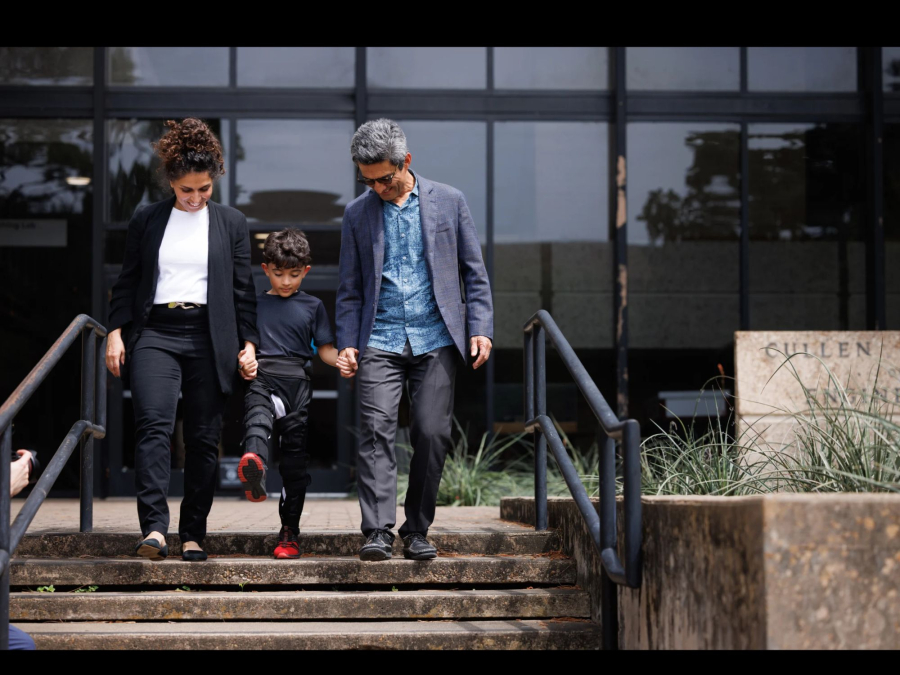Just one look at the next-generation lightweight, soft exoskeleton for children with cerebral palsy reveals the powerful role technology can play in solving global challenges and improving lives.
Built to help children walk, the MyoStep addresses motor impairments that severely restrict children’s participation in physical activities, self-care and academic pursuits, leading to developmental delays, social isolation and reduced self-esteem. It is lightweight, discreet, made of smart materials and wearable technology, and tailored to fit seamlessly into the lives of children and their families.
The MyoStep soft exoskeleton is being introduced in Electron Devices Magazine by a team from the NSF UH Building Reliable Advances and Innovation in Neurotechnology (BRAIN) Center, an Industry–University Cooperative Research Center (IUCRC) and TIRR Memorial Hermann.
“The MyoStep project represents a significant advancement in the field of pediatric mobility aids, particularly for children with cerebral palsy,” said Jose Luis Contreras-Vidal, director of the NSF BRAIN Center and Hugh Roy and Lillie Cranz Cullen Distinguished Professor of Electrical and Computer Engineering.
“By integrating cutting edge technologies such as artificial muscles, smart fabrics, and a comprehensive sensor network, MyoStep offers a promising solution to the challenges faced by existing exoskeletons,” he said.
Read the fully story, and see video of the MyoStep in action, here!
